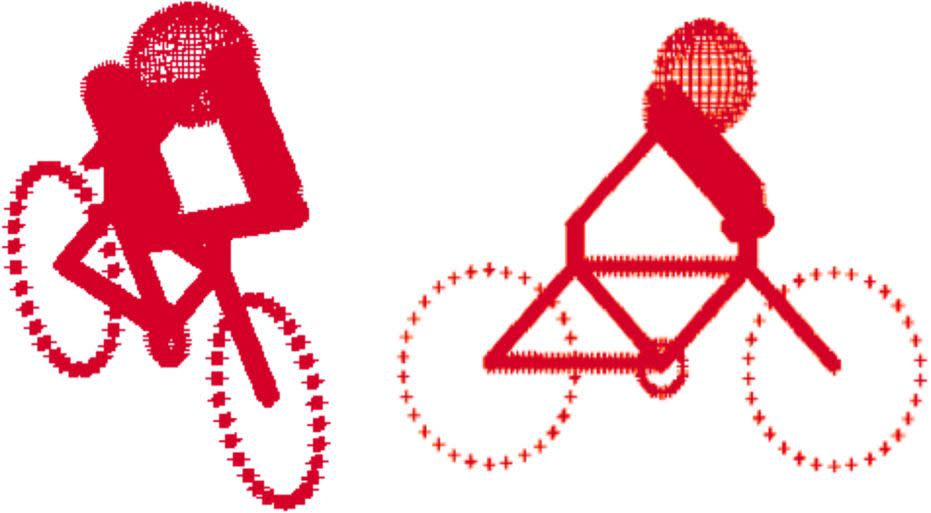Physicists Solve the Mystery of the Light-Speed Cyclist

"Hearst Magazines and Yahoo may earn commission or revenue on some items through the links below."
New research breaks down the ways our eyes would process an object moving at light speed.
General relativity introduces all kinds of wild distortions because objects are racing with light.
Looking at the light-speed cyclist would make us all feel very sick.
Big news for students of the Star Trek school of warp speed: Scientists have proven that watching a body move at light speed would make you feel sick to your stomach.
That’s because the visual information coming in from both eyeballs would combine into a distorted, confusing mental picture that the human brain would find dizzying, they say.
Like those who designed the stretching USS Enterprise over several generations of special effects, physicists have wondered for decades what an object traveling at light speed would look like. In fiction, the goal is to persuade viewers that they’re really seeing warp speed—but in reality, the question is reversed. If light speed were a given and we knew it, what would that look like?
Soviet-born physicist George Gamow defected and moved to the U.S. in the 1930s. He wrote a book called Mr. Tompkins in Wonderland to help explain physics ideas to children, but the book contained a thought experiment that has lingered for decades.
“[I]n it, the titular hero is transported to a strange world in which the speed of light is only slightly faster than that of a bicycle and he sees a passing cyclist to be Lorentz contracted, in apparent agreement with Einstein’s Theory of Special Relativity,” British researchers write in a new paper published in Proceedings of the Royal Society A.
[The Beginner’s Guide to Strength Training will teach you all the fundamentals to get the most out of your weight session.]
Lorentz contraction is a visual squashing where you expect to see the entire object. But in their paper, the researchers discuss all the pieces of what we “see” when we look at a moving object and use that to build a new understanding of the light-speed cyclist. The scientists explain:
“For a human, a very thin strip of visibility would run vertically across the cyclist, revealing the distortions; namely, the front of the bicycle appears squashed and the left side of the cyclist’s body appears rather horrifically twisted as it lags behind the right side. These differences, when presented to a human observer, would most likely cause extreme motion sickness.”
The reason for this is our advancing understanding of human sight. First, with two eyes (“binocular vision”), our brains receive information in two sections whose shared micro-lag is magnified by extremely high speeds. All the parameters are immediately doubled and muddied in stereoscope.
Adding visual information with light and shadow, 3D “substance,” colors, and more only multiplies the visual confusion. The scientists modeled this using math models for each of the different visual parameters.
A bicycle wheel is a uniquely great way to think about relative motion. If a wheel is traveling at the speed of light, half of each wheel appears to be spinning forward, while half is technically going backward. This is one reason it’s such an enduring thought exercise. Is the entire bicycle visually squashed, even though the wheels aren’t in one uniform motion vector?

And while this all sounds far out—no one is riding a bike at the speed of light!—the researchers say it could have applications in space exploration and telescopy. The scientists explain:
“[T]hese methods could be integrated within a relativistic probe to observe stationary objects as they move past, or a synthetic aperture which would allow the probing of distant, relativistic objects.”
Essentially, a powerful space viewer could match passing flickers with the distortion profile in this paper and detect whole objects even at extremely high speeds.
You Might Also Like

